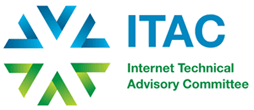By Mat Ford, Technology Program Manager, Internet Society
The Internet is a powerful force for unleashing innovation and economic growth. Underpinning this capacity of the Internet to drive change and progress are some aspects of technology that may be easy to overlook, but that are in fact fundamental. The huge economic and social benefits brought about by the Internet are ultimately supported by very specific characteristics of the underlying technology.
The Internet is powerful because it is global and because it is open. The global nature of the Internet is made possible by Internet addressing. Without a unique, public Internet address, communications must be proxied, leading to degradation of communication quality, and reduced potential for the network overall.[1] Proxying communications in this way reduces the resilience of the network, increases costs for service providers, has implications for communications traceability and curtails the ability of the network to act as a platform for innovation, thereby diminishing the economic growth associated with the Internet. The need to proxy communications is growing as available public address space runs out all over the world. In addition to costs for service providers, it’s worth noting that growing use of proxies creates costs for the whole Internet industry as they work around the proxies. This will be needed in the short term, but it is possible to move to a better solution for the long-term future of the Internet and remove these costs from the entire industry.
Deployment of IPv6 technology is the solution for this growing problem.[2] In the 2008 Seoul Declaration for the Future of the Internet Economy, OECD member states encouraged the adoption of IPv6, in particular by governments and large private sector users. The Internet technical community echoed this encouragement in their Memorandum on the Future of the Internet in a Global Economy, where the fundamental importance of IPv6 deployment for the successful evolution of the Internet was strongly emphasized.
Since 2008, IPv6 deployment has gathered pace, stimulated recently by World IPv6 Launch, an industry-wide collaborative activity organized by the Internet Society. This activity has helped to encourage IPv6 deployment at large Internet content providers, service providers and equipment vendors. Major fixed-line and mobile Internet service providers are now starting to carry significant volumes of IPv6 traffic on their networks, and this progress is being measured and reported regularly to stimulate further progress across the wider Internet industry. IPv6 implementation will support huge growth in the range of services and products that make use of the Internet and is a fundamental enabler of the Internet economy, supporting the creation of new markets and catalyzing economic growth.
But further encouragement is necessary. Overall IPv6 uptake remains patchy and the opportunity remains for governments and leading private sector organizations to show leadership in securing the future of the open and global Internet, with sufficient public addresses for all, that is so central to the economic growth of tomorrow.
Read more about the Internet Society’s IPv6 activities here: http://www.internetsociety.org/ipv6
http://www.internetsociety.org/ipv6-isp-heatmap
Read more about World IPv6 Launch here:
http://www.worldipv6launch.org/infographic/
_______________________________
[1] Communications are proxied by Network Address Translators (NATs). The NAT has a public Internet address that it shares across multiple private connections.
[2] Internet Protocol version 6 (IPv6) is the latest revision of the Internet Protocol (IP), the communications protocol that provides an identification and location system for computers on the Internet. IPv6 was developed by the Internet Engineering Task Force (IETF) to deal with the long-anticipated problem of IPv4 address exhaustion. See http://en.wikipedia.org/wiki/IPv6 for more detail.

